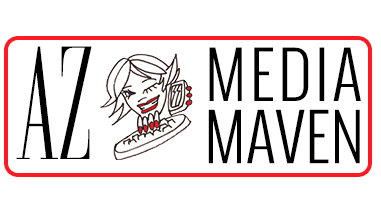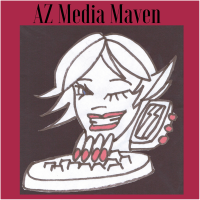If you’ve asked ChatGPT or Google’s AI Overview a question recently, you’ve probably noticed something interesting. Often, instead of showing a list of websites, the platform gives you a direct answer – summarized, organized, and easy to read. Welcome to the age of Generative Engine Optimization, or GEO.
At AZ Media Maven, we’re seeing firsthand how AI-generated responses are changing the way people discover brands, products, and services online. Traditional SEO still matters, but it’s no longer the whole picture. If your content isn’t being used to train or inform these AI systems, you could be missing out on a growing share of traffic and visibility.
So what is GEO, and how does it work alongside SEO? Let’s break it down.
What is generative engine optimization?
Generative Engine Optimization refers to the practice of optimizing your content to appear in AI-generated answers — like those created by ChatGPT, Google’s Search Generative Experience (SGE), Microsoft Copilot, and other tools that use large language models (LLMs).
Unlike traditional search engines that show ten blue links, generative engines synthesize information from across the web into a single answer. That answer might include facts, citations, summaries, and sometimes even product recommendations.
This means content is no longer solely about ranking first. It’s about being included in the answer itself.
SEO is still essential, but GEO is the next layer
Here’s the truth: you can’t have good GEO without solid SEO.
AI tools are trained on the content they can crawl, and much of that comes from well-optimized websites. If your site is slow, unclear, outdated, or lacks structure, it’s less likely to be sourced by AI.
Traditional SEO helps with:
- Making your site crawlable and indexable
- Providing structured data and metadata
- Ranking in featured snippets and people-also-ask boxes
- Building domain authority through backlinks
GEO builds on that foundation by ensuring your content is:
- Clear and well-formatted, so it’s easy for AI to summarize
- Factual and up to date, which increases trustworthiness
- Original and authoritative, which makes it more likely to be cited or quoted
In short, SEO gets you seen, and GEO gets you heard.
How to optimize for AI-generated answers
- Create content that answers questions directly
AI systems are drawn to content that is conversational, helpful, and accurate. Start with a clear headline, give a concise answer, and follow up with detail. Blog posts, FAQs, and how-to guides work especially well. - Use natural language and structured formats
Bulleted lists, numbered steps, subheadings, and tables help both search engines and AI models understand your content more clearly. - Cite sources and use reputable links
If you reference data, make sure it’s credible. AI favors content that demonstrates expertise, experience, authority, and trustworthiness (EEAT). Google’s own documentation on AI-generated content offers more on this. - Be specific to your niche or location
General answers are already covered. But if your content offers local insight or industry-specific expertise, it’s more likely to fill a gap in what AI models know.
Want more help crafting content that’s both SEO and AI-ready? Check out our content marketing services.
What does this mean for your business?
As AI continues to shape how people interact with search, businesses need to evolve too. If your content is buried on page 3 of Google, you’re already invisible. If you’re not part of AI-generated summaries, you might become irrelevant.
That’s not meant to scare you. It’s meant to empower you. With the right content strategy, you can show up both in search results and inside AI answers – boosting visibility, building trust, and staying ahead of your competitors.
Get ahead with Generative Engine Optimization
Generative Engine Optimization isn’t replacing SEO. It’s enhancing it. Together, they form a complete strategy for visibility in 2025 and beyond.
At AZ Media Maven, we help businesses adapt to the future of search – blending smart SEO with AI-savvy content creation. Let’s make sure your brand shows up wherever people are looking. Reach out today and let’s get started.
AZ Media Maven is based in Laveen, AZ, a suburban village in the greater Phoenix area. Owner Rose Tring has more than 30 years of journalism experience as an editor and writer, many of those years in business news. She created AZ Media Maven in 2012 to help other business owners succeed by effectively telling their stories through public relations and social media. Reach AZ Media Maven at azmediamaven@azmediamaven.com or call (602) 373-8371.










